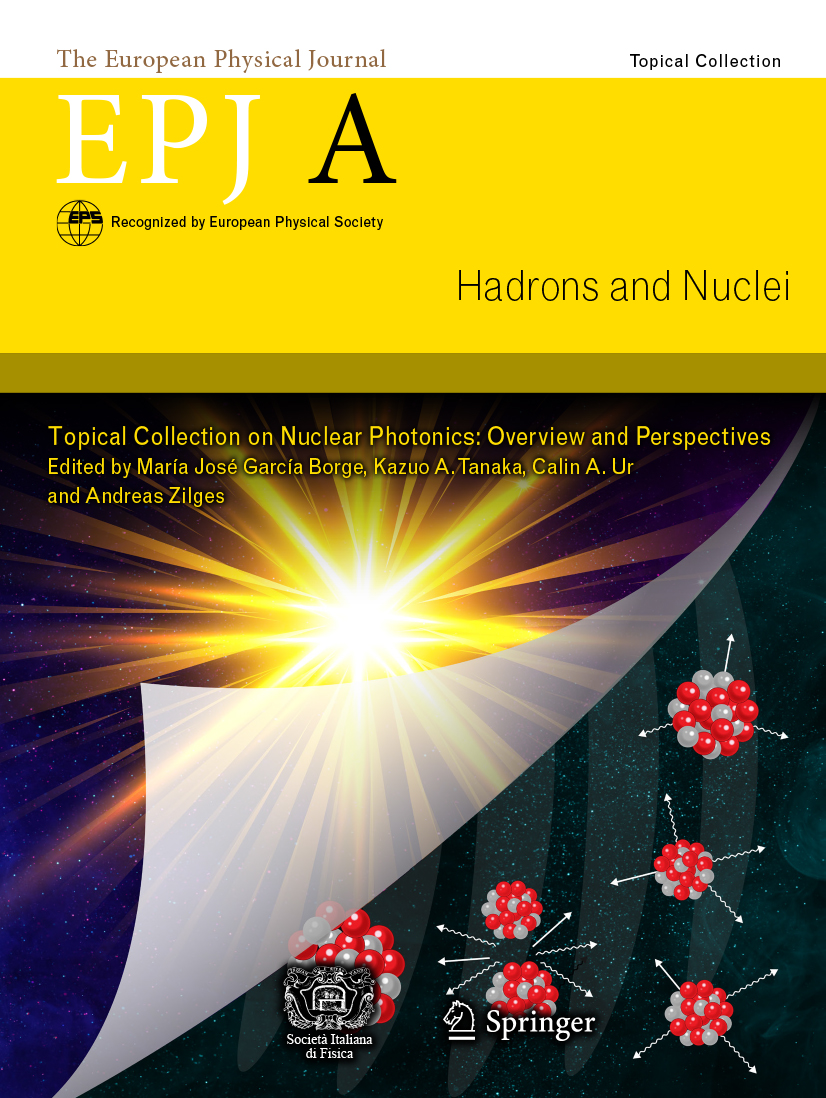EPJ A Topical Collection: Nuclear photonics: overview and perspectives
- Details
- Published on 17 February 2025

Guest Editors: María José García Borge, Kazuo A Tanaka, Calin Alexandru Ur and Andreas Zilges
Nuclear Photonics is a major development of Photonics, which has undergone a rapid evolution and transformation over the past decade. Until recently, the field was mainly related to the photonuclear reactions induced by gamma rays, in the range of MeV energy. The Chirped Pulse Amplification method has been refined since its discovery in 1985, leading to the development of laser systems able of achieving a focused intensity as high as 1023 W/cm2. At this level of intensity, the laser-matter interaction enters the relativistic regime and the laser beam can penetrate the solid density without any difficulty, accelerate the electrons and ions and generate radiation in the gamma-ray energy range from a few hundred MeV to GeV. The comprehension and control of these interactions will facilitate the exploration of novel domains within nuclear photonics by using intense laser light.
Significant advances have been made in both theoretical and experimental aspects of nuclear photonics, thereby establishing new research opportunities. The Topical Collection Nuclear Photonics: Overview and Perspectives aims to provide a comprehensive overview of selected topics.
The contributions have been grouped into three main topics, as follows: 1) nuclear physics with gamma-ray beams, 2) laser-driven secondary radiation sources, and 3) laser-driven physics. These topics are challenging and represent a significant step forward in the pursuit of knowledge that can only be addressed by the availability of extreme light infrastructures.
The aim of this Topical Collection is twofold: first, to provide a comprehensive review of some of the most relevant topics related to nuclear photonics and second, to show the significant research opportunities that have emerged due to the development of state-of-the-art sources of high-power lasers and intense quasi-monochromatic gamma-ray sources.
The articles included in the Topical Collection are available here and are freely accessible until 30 April 2025. For further information read the Editorial.




